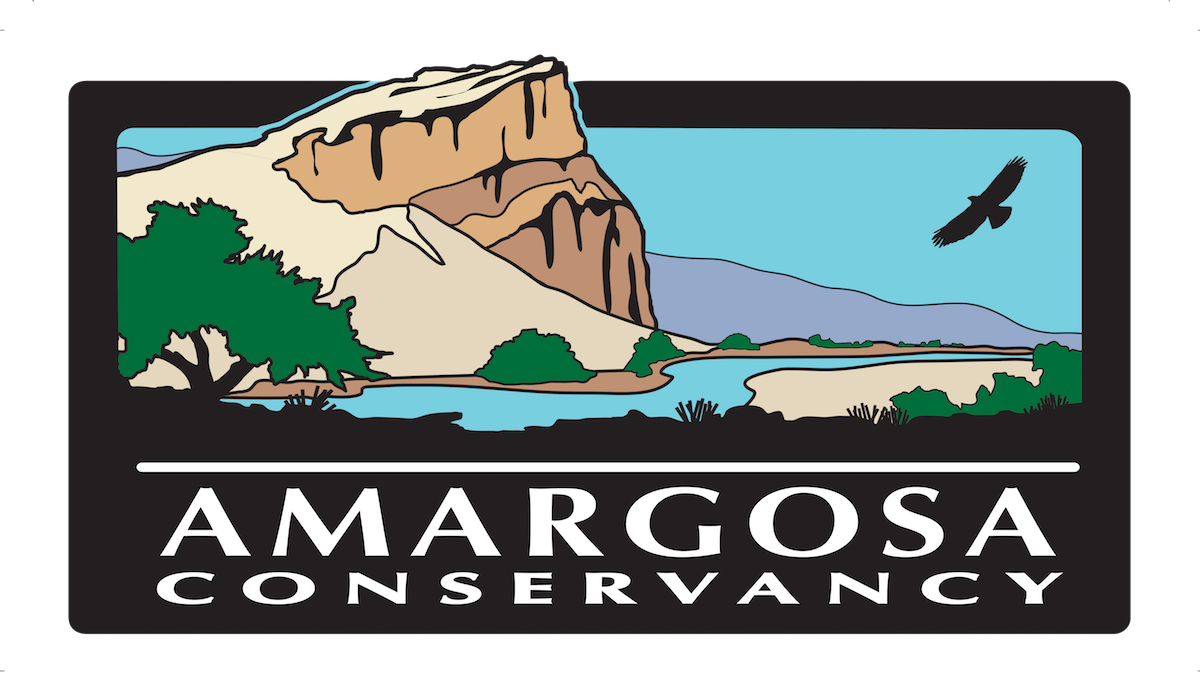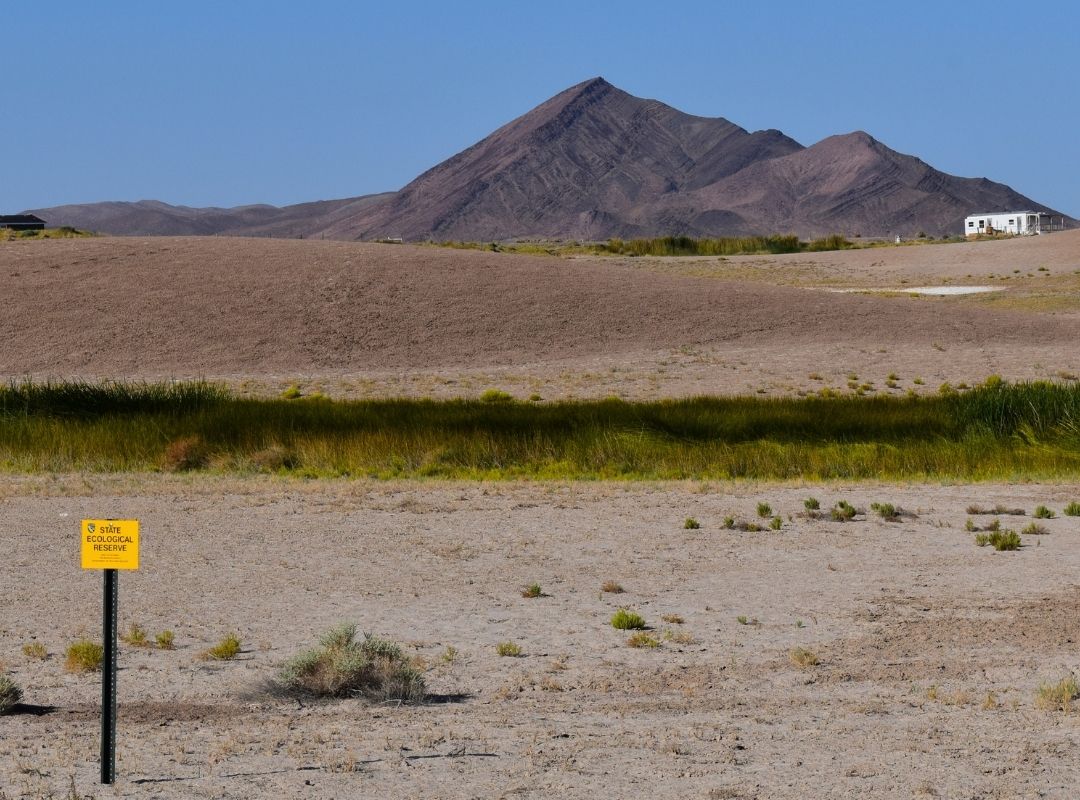By Scott H. Williams, Restoration Project Manager
“Cultures of gratitude must also be cultures of reciprocity. Each person, human or no, is bound to every other in a reciprocal relationship. Just as all beings have a duty to me, I have a duty to them. If an animal gives its life to feed me, I am in turn bound to support its life. If I receive a stream’s gift of pure water, then I am responsible for returning a gift in kind. An integral part of a human’s education is to know those duties and how to perform them.”
– Robin Wall Kimmerer, Braiding Sweetgrass.
On a warm spring morning, I find myself somewhat awkwardly weaving through thick stands of bulrush and patches of sticky clay mud at the Tecopa Ecological Preserve. There are only a few blood-sucking flies out today, but dense vegetation, mud, and pools of standing water slow my progress. This marsh fools my sense of place, making me forget temporarily that I am still in the infamously dry Mojave Desert.
This area on the north side of Tecopa Hot Springs is a spring-fed wetland that spans parcels of land owned by California Department of Fish and Wildlife (CDFW) and the federal Bureau of Land Management. To the north is the Borehole hot spring; private residences and hot springs resorts lie to the south. All of these separate properties contain natural springs that flow year round, supplying the marsh with dependable streams of water.
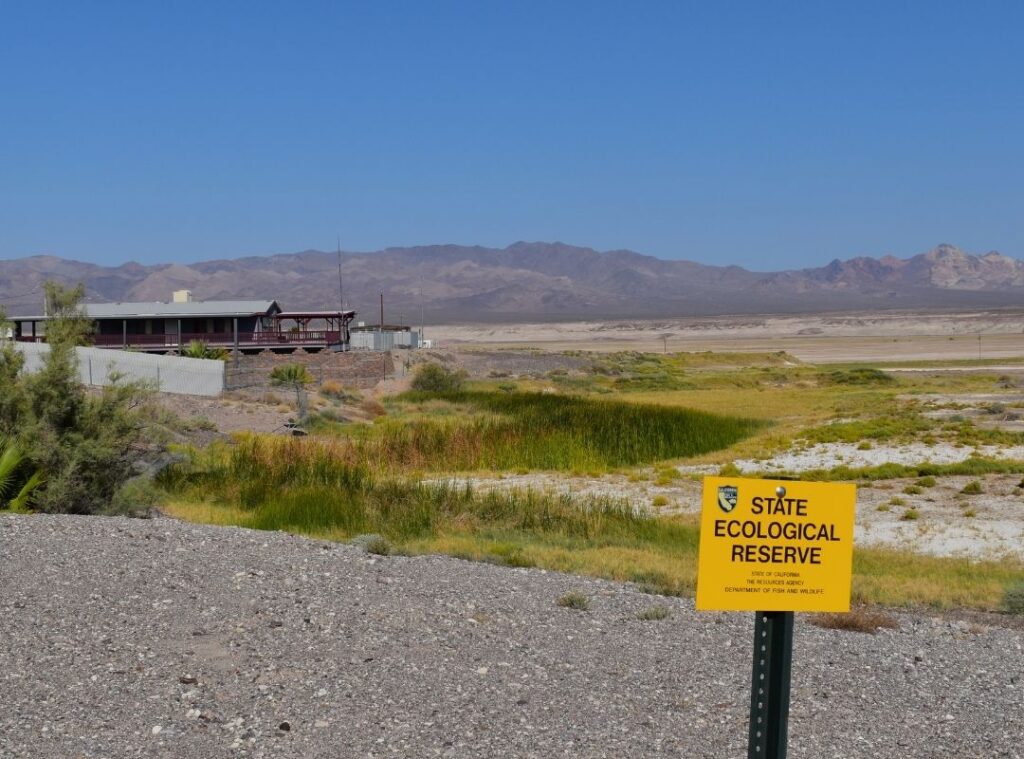
The bulrush wetland on the Tecopa Ecological Reserve is supplied with water from hot springs water flowing from private property
Notwithstanding the terrain, the task is fairly simple: I document the state of the marsh with photographs and record any changes that I notice from previous quarterly monitoring events at the same designated locations and then pass the information on to the land management agency in a report. In this case, that agency is CDFW. It’s mainly an exercise in regular observation and record keeping, tracking changes in the landscape through time.
Aerial footage of the Tecopa Ecological Preserved captured by drone
On my drive home along Tecopa Hot Springs Road, I see someone I’ve been meaning to talk to. I pull into Tecopa Hot Springs Resort and Campground, where Amy Noel is troubleshooting a plumbing connection in an underground vault with some of her staff. Amy has owned the resort (known locally as just “Amy’s”) for nearly three decades. Amy’s hot springs water flows into a stream and ultimately down into the marshes on the west side of the road, as does the runoff from each of the other three nearby resorts.
I had noticed something about this particular stream: when the resort was closed for summer in June through September, the water did not reach the wetland.

Hot springs water outflow from Tecopa Hot Springs Resort and Campground
After a cordial good-morning and comments on the weather, I ask Amy whether it is possible to keep the water flowing into the marsh when the baths are closed. She replies that she is open to the idea, but it would involve some work and changes to the plumbing. It is clear those changes won’t be made today. The highly mineralized, alkaline water has taken its toll on another coupling and they have their hands full with repairs at Amy’s. However, I learn that she will keep the resort open all summer this year. We agree to run a little experiment: I’ll watch the outflow stream to see if the water continues to run into the marsh, or if the intense desert dry heat and thirsty plants desiccate the stream even when the runoff is maintained.
This exchange brings up a surprisingly complex conundrum that lingers at the heart of conservation philosophy. Mainstream Western understanding, rooted in religious and cultural cosmologies and rational Enlightenment values, draws a separation between human beings and the rest of the material world. One of many significant results of the dominance of this uniquely European perspective in the modern world has been that the best way to maintain a healthy, balanced environment is by not interfering, simply leaving it be.
An alternate perspective can be found in the traditional Indigenous relationship between people and nature, based on animist spirituality. The late Corbin Harney, a Western Shoshone spiritual leader, anti-nuclear activist, and founder of the Poo-Ha-Bah hot springs healing center in Tecopa, offers a sample of this understanding in his book The Nature Way:
“The trees, the water, the rocks, all the living things are connected…. We have to take care of them because they were put here with us, so we are connected to them as we are connected to our Mother, our Father.”
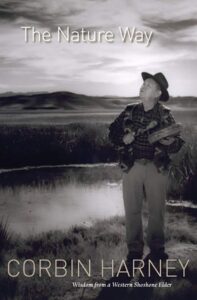
On the cover of his book The Nature Way, Corbin Harney stands in front of the Borehole hot spring in Tecopa
We bump up against this uncertainty in our attempt to foster the healthiest version of this unique environment along the Amargosa River. Here in Tecopa Hot Springs, the reality that there is no “hands-off” option for interacting with the environment is obvious. The town, though tiny, is uniquely positioned so that individual property owners and hot springs resorts contribute precious water directly to the wetlands that harbor a remarkable number of rare species.
Even if people were to suddenly vanish from the Amargosa region, the land would not restore itself to the condition that the first European colonists found it in. The “virgin” landscape that pioneers beheld had been actively shaped and stewarded by the various Indigenous peoples for millennia.
But to what degree should we intervene? The history of European meddling with the landscapes of the western U.S., even with the best of intentions, shows a track record of cascading and often disastrous unintended consequences (as in the case of tamarisk trees, which were introduced for flood control). As the Amargosa Conservancy begins a new chapter by planning major restoration along the river for the first time, it will be necessary to wade into these philosophical waters and be comfortable with a degree of uncertainty.
Encouraged by Amy’s openness to finding a way to keep her water flowing into the marsh, I decided to ask her for a quote on how she views people’s relationship with nature for this piece. This is what she sent:
“Human beings need to remember, we are part of this planet’s ecosystems. When realized, even in small ways, it’s easy to see that everything is related. With this knowledge we can make better choices where all life can flourish, including ours, because in all our diversity we are part of it!
Everything has a purpose, tells stories, even if we don’t initially understand it. That takes study and observation. Nature provides us with so many gifts that need to be honored and nurtured, not exploited for short term gains without understanding bigger pictures so that all life might flourish for many generations to come.”
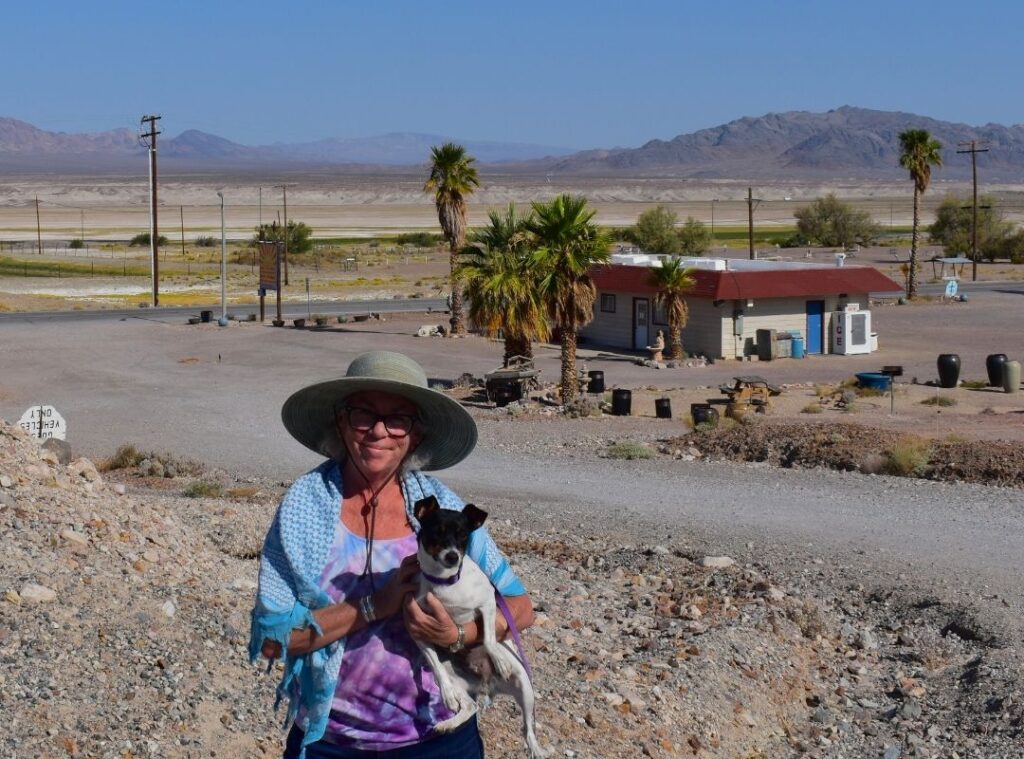
Amy Noel
Amy is not the only landowner in this part of the Amargosa to embrace a reciprocal relationship with the environment. After the shuttering of the last mines in the valley, Tecopa and Shoshone were facing an identity crisis and economic depression. Both could have easily become another desert ghost town. But Susan Sorrells was inspired by the emergence of ecotourism as a lifeline for Shoshone, the town 10 miles north of Tecopa that she owns and is connected to by generational roots. She invested in restoration, trail construction, and interpretive signage, and today Shoshone is a busy destination along the route from Los Angeles to Death Valley. Brian Brown adopted a similar model at the nearby China Ranch Date Farm, embracing a conservation easement on his land that brings in funding for stewardship, which in turn has made the farm a tourist destination and hiking trailhead.
It’s easy to drift into a utopian vision for this place. It is an oasis, after all. Gradually, incrementally, by engaging with members of the community, hearing their concerns, and collaborating with them, we can aspire to achieve a balance with this delicate ecosystem that benefits the human and nonhuman inhabitants alike.
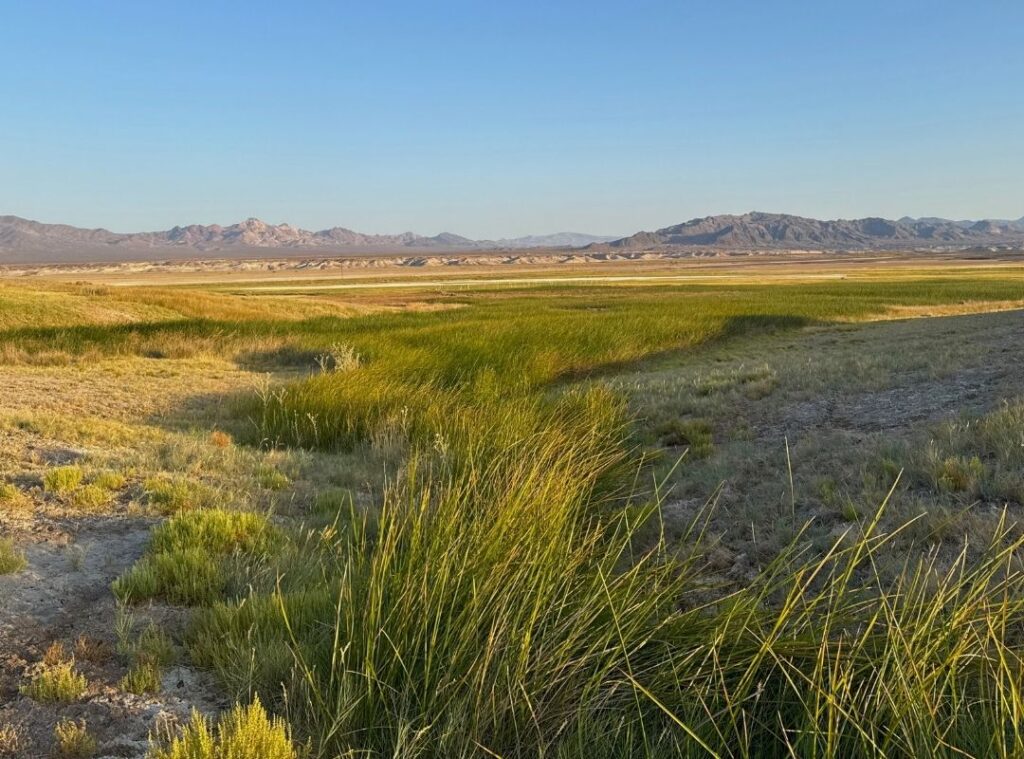
Dawn light on the Tecopa Ecological Reserve, June 2025
